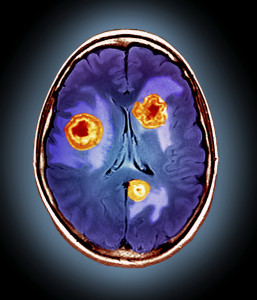Improved inflammation imaging

Lewis A & B sugars can recognise and bind to activated endothelial cells in vivo. When conjugated to a suitable imaging moiety, eg an MRI-active material, the conjugate enables the activated endothelium to be visualised, thus helping to diagnose inflammatory diseases. The conspicuity of these conjugates is significantly improved compared with known passive or targeted imaging agents.
The use of well-conserved sugars (Lewis A & B) enables species boundaries to be easily crossed and these sugars are much easier to produce than previously used targeting moieties.
Targeted contrast agents bring faster and more accurate diagnosis
Imaging techniques – including MRI, PET and ultrasound – are employed for the diagnosis and staging of disease. Contrast agents are used in imaging to increase the signal difference between the area of interest and background. Such agents can be divided into two general categories, those passive agents which non-specifically enhance the signal that is produced and targeted contrast agents which are chemically modified in order to localise to a specific cell type or tissue through an active mechanism.
Passive agents are most widely used, but reflect downstream pathology. Targeted agents, by contrast, can reveal the earliest of changes associated with disease development by virtue of their ability to recognise molecular changes in a particular cell or tissue that precede changes in tissue structure. Such targeted agents overcome the difficulties of high background signal in order to provide a clear picture for the clinician.
There is a need for improved contrast agents that can be targeted to cell surface receptors to enhance imaging techniques.
The Oxford Invention
Oxford researchers have found that the Lewis A & B sugars can recognise and bind to activated endothelial cells in vivo. Furthermore, when conjugated to a suitable imaging moiety, eg an MRI-active material, the conjugate enables the activated endothelium to be visualised.
Benefits of this approach
Oxford researchers have used their invention to generate new imaging agents to diagnose diseases associated with endothelial activation (eg inflammatory diseases such as MS & atherosclerosis). The conspicuity of these conjugates is significantly improved compared with known passive or targeted imaging agents. The use of well-conserved sugars (Lewis A & B) enables species boundaries to be easily crossed and these sugars are much easier to produce than previously used targeting moieties.
Patent protection and commercial opportunities
The underlying technology is the subject of an international patent application. Several other complementary targeted imaging projects have also been developed at Oxford:
-
Biodegradable multimeric iron oxide particles – project 2924
-
Humanised monoclonal antibodies to VCAM-1 – project 6596
Companies interested in progressing the commercial opportunities are invited to contact Oxford University Innovation.
Request more information if you would like to discuss this further.
about this technology

